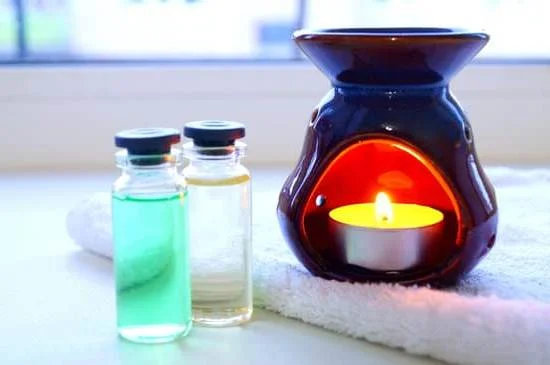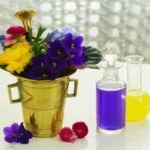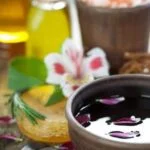Aromatherapy has become increasingly popular in recent years as people seek natural remedies for various health concerns. In this article, we will explore the world of aromatherapy and delve into the question: how many people do aromatherapy? We will discuss the history and origins of aromatherapy, the science behind its effectiveness, and its benefits for mental and physical health.
Aromatherapy has a rich history that dates back thousands of years, with roots in ancient civilizations such as Egypt, Greece, and China. Through the use of essential oils extracted from plants, aromatherapy is believed to offer therapeutic benefits for both the mind and body. As we uncover the history and origins of aromatherapy, we will gain a deeper understanding of its enduring appeal and widespread adoption.
Furthermore, we will explore the demographics of those who participate in aromatherapy. From age groups to cultural backgrounds, we will examine who is most drawn to this practice. By understanding who engages in aromatherapy, we can gain insight into its growing popularity and how it has become integrated into various traditions and cultures around the world.
The History and Origins of Aromatherapy
Aromatherapy has been used for centuries as a way to promote physical and mental well-being. The practice of using aromatic plant extracts, or essential oils, dates back to ancient civilizations such as the Egyptians, Greeks, and Chinese.
In fact, the use of essential oils for therapeutic purposes can be traced back more than 6,000 years. The ancient Egyptians were known to use aromatic oils in religious ceremonies and embalming practices, while the Greeks utilized essential oils for their healing properties.
The term “aromatherapy” was coined in the 20th century by French chemist René-Maurice Gattefossé after he discovered the healing properties of lavender oil when he used it to treat a burn on his hand. This led him to further research the benefits of essential oils which eventually paved the way for modern aromatherapy practices.
Throughout history, various cultures have incorporated aromatherapy into their traditional healing practices. In India, Ayurveda utilizes essential oils as a part of its holistic approach to health and wellness. Traditional Chinese medicine also recognizes the therapeutic benefits of certain aromatic substances. As a result, the history and origins of aromatherapy demonstrate its enduring appeal and widespread use across different cultures and time periods.
The Science Behind Aromatherapy
Aromatherapy is a holistic healing treatment that uses natural plant extracts to promote health and well-being. The use of essential oils in aromatherapy can be traced back to ancient civilizations, where they were used for their medicinal and therapeutic properties. Today, aromatherapy is gaining popularity as more people seek alternative and complementary forms of medicine.
How Aromatherapy Works
The science behind aromatherapy lies in the powerful effects of essential oils on the body and mind. When inhaled or applied to the skin, these oils can stimulate the olfactory system and affect the limbic system – the part of the brain that controls emotions, memory, and behavior. This results in various physiological and psychological responses, such as relaxation, stress reduction, improved mood, and pain relief.
The Role of Essential Oils
Essential oils are the key components in aromatherapy, each with its own unique therapeutic properties. They are highly concentrated plant extracts that have been used for centuries for their healing benefits. Different oils have different effects on the body and mind, with some being uplifting and energizing, while others are calming and soothing. Some popular essential oils used in aromatherapy include lavender for relaxation, peppermint for mental clarity, tea tree for immune support, and eucalyptus for respiratory health.
Research on Aromatherapy
While there is still a need for more scientific research on aromatherapy, several studies have shown promising results regarding its effectiveness. Research has indicated that certain essential oils can help reduce anxiety, improve sleep quality, alleviate headaches, and even enhance cognitive function. As interest in natural remedies continues to grow, more studies are being conducted to explore the potential benefits of aromatherapy on overall health and wellness.
Demographics
Aromatherapy is a popular holistic healing treatment that has been gaining traction in recent years. But just how many people do aromatherapy? A large portion of the population, it turns out. Aromatherapy is not limited to any specific demographic or group of people; instead, it appeals to a diverse range of individuals seeking natural remedies for various physical and mental health concerns.
The practice of aromatherapy is not confined to a specific age group or gender. People of all ages, from children to the elderly, participate in aromatherapy for its therapeutic benefits. In addition, both men and women have embraced the use of essential oils and aromatherapy techniques as a natural approach to improving their overall wellbeing.
Furthermore, aromatherapy has attracted the attention of individuals with different cultural backgrounds and lifestyles. Its universal appeal has led to its incorporation into various wellness routines worldwide. From busy professionals seeking stress relief to athletes looking for muscle recovery aids, the demographic encompassing individuals interested in aromatherapy is vast and diverse. The growing consumer interest across different demographics is indicative of the widespread acceptance and recognition of the benefits associated with aromatherapy.
Benefits of Aromatherapy for Mental and Physical Health
Aromatherapy is a holistic healing treatment that uses natural plant extracts to promote health and well-being. It has gained popularity in recent years as more and more people are turning to alternative medicine and natural remedies for their physical and mental health needs.
But just how many people do aromatherapy? According to a survey conducted by the National Center for Complementary and Integrative Health, it was found that approximately 30% of adults in the United States have used some form of complementary health approach such as aromatherapy.
The benefits of aromatherapy for mental and physical health are numerous. Here are some of the ways in which aromatherapy can positively impact your overall well-being:
- Stress relief: Certain essential oils like lavender, rose, and chamomile have been shown to help reduce stress and anxiety levels.
- Improved sleep: Many people use essential oils like cedarwood, bergamot, and sandalwood to promote relaxation and improve their quality of sleep.
- Pain management: Some essential oils like peppermint, eucalyptus, and ginger have analgesic properties that can help alleviate pain from headaches, muscle aches, and joint pain.
- Mood enhancement: Citrus essential oils such as orange, lemon, and grapefruit are known for their uplifting properties that can improve mood and increase energy levels.
In addition to these benefits, aromatherapy has also been used to support mental clarity, boost immune function, and enhance overall well-being. With its growing popularity, more research is being conducted to further understand the potential benefits of aromatherapy for both mental and physical health.
Common Essential Oils and Their Uses in Aromatherapy
Aromatherapy utilizes a variety of essential oils, each with unique properties and benefits. These oils are derived from various plants, flowers, and herbs, and are used in different ways to promote physical and mental well-being. Here are some common essential oils used in aromatherapy and their specific uses:
- Lavender: Known for its calming and relaxing properties, lavender oil is often used to reduce stress and anxiety. It can also aid in promoting better sleep quality.
- Peppermint: Peppermint oil is popular for its invigorating and refreshing scent. It is commonly used to alleviate headaches, improve focus, and relieve nausea.
- Tea Tree: With its antimicrobial properties, tea tree oil is often used in aromatherapy to support the immune system and treat skin conditions such as acne or fungal infections.
In addition to these popular essential oils, there are many others that are widely used in aromatherapy, each offering their own set of benefits. Some other commonly used essential oils include eucalyptus, lemon, chamomile, and rosemary.
How to Use Essential Oils in Aromatherapy
Essential oils can be utilized in a variety of ways to experience their therapeutic effects. Here are some common methods of using essential oils in aromatherapy:
- Diluted in Carrier Oils: Essential oils can be diluted in carrier oils such as coconut oil or jojoba oil for massage therapy or topical application.
- Diffusion: Using an essential oil diffuser allows the aroma of the oil to fill the air, providing inhalation benefits.
- Bathing: Adding a few drops of essential oil to a warm bath can create a soothing and relaxing experience.
Whether it’s through inhalation or topical application, incorporating essential oils into your aromatherapy practice can provide numerous benefits for both the mind and body.
Aromatherapy in Different Cultures and Traditions
Traditional Chinese Medicine (TCM) and Aromatherapy
In Traditional Chinese Medicine (TCM), aromatherapy is often practiced through the use of herbal medicine, acupuncture, and acupressure. In TCM, essential oils are utilized to balance the body’s energy flow or Qi, promoting healing and overall wellness. The Chinese have long used aromatherapy as a form of natural medicine to treat a wide range of ailments.
Indian Ayurveda and Aromatherapy
In Indian Ayurvedic tradition, aromatherapy is integrated into holistic healing practices to create harmony between the mind, body, and spirit. Essential oils are used in massage, bathing rituals, and inhalation therapies to promote relaxation, balance doshas (constitution), and improve overall health. Many traditional Indian households also incorporate essential oils in religious ceremonies as offerings.
Native American Traditions and Aromatherapy
For Native American cultures, plants have always been seen as sources of spiritual strength and healing powers. Aromatherapy was often practiced through smudging rituals using sacred herbs like sage or cedar for purification purposes. Additionally, aromatic plants were used for ceremonial purposes to connect with nature and the spirit world.
From China to India to Native American cultures, aromatherapy has been an integral part of traditional healing methods across various cultures throughout history. Today, its worldwide popularity continues to grow as more people embrace its natural therapeutic benefits.
How to Incorporate Aromatherapy Into Your Daily Life
Aromatherapy has become increasingly popular as more people seek natural and holistic approaches to health and wellness. Incorporating aromatherapy into your daily life can be a simple yet effective way to experience its benefits. Many people wonder how to integrate aromatherapy into their routines, and there are several easy ways to do so.
One of the most common ways to incorporate aromatherapy into daily life is by using essential oils. You can add a few drops of your favorite essential oil to a diffuser and enjoy the aromatic scent throughout your home or workspace. Another popular method is to apply diluted essential oils topically, either through massage or by adding them to skincare products. Additionally, you can create your own custom blends for personalized aromatherapy experiences.
Another way to make aromatherapy a part of your daily routine is by using scented candles or room sprays infused with essential oils. These can provide a gentle and continuous release of aromatic fragrance, creating a calming and soothing atmosphere in any space. Aromatherapy can also be incorporated into self-care practices such as meditation, yoga, or even simply taking a relaxing bath.
Incorporating aromatherapy into your daily life doesn’t have be complicated or time-consuming. With the wide variety of available products and methods, it’s easier than ever to enjoy the benefits of aromatherapy on a regular basis. Whether it’s for relaxation, mood enhancement, or overall well-being, finding simple ways to include aromatherapy in your day can have a positive impact on both mental and physical health.
| Demographic | Percentage |
|---|---|
| Adults in the United States who have used aromatherapy | 39% |
| Women who use aromatherapy | 51% |
| Young adults aged 18-29 who have tried aromatherapy | 47% |
Aromatherapy Practices and Trends Today
Aromatherapy has gained significant popularity in recent years, with more and more people turning to essential oils and aromatherapy practices for their mental and physical health benefits. But just how many people do aromatherapy? According to recent research, it is estimated that over 50 million Americans have tried aromatherapy at least once in their lifetime. This number is expected to continue growing as more individuals seek out alternative and natural ways to improve their well-being.
One of the main reasons behind the growing popularity of aromatherapy is its wide range of applications. From promoting relaxation and reducing stress to alleviating headaches and improving sleep quality, there are numerous reasons why people turn to aromatherapy. In fact, a survey conducted by the National Association for Holistic Aromatherapy found that the top three reasons individuals use aromatherapy are for relaxation (74%), stress relief (66%), and mental clarity (40%).
Another trend in modern aromatherapy practices is the integration of technology. With the rise of diffusers and personal inhalers, individuals can easily incorporate aromatherapy into their daily routines. Moreover, there has been an increase in the availability of information on essential oils and their specific benefits, leading to a more informed consumer base when it comes to using aromatherapy for various purposes.
| Statistic | Data |
|---|---|
| Americans who have tried aromatheraphy | 50 million |
| Top reason for using arometheraphy (relaxation) | 74% |
Conclusion
As we have seen throughout this article, aromatherapy has a rich history and is based on the use of essential oils for both physical and mental health benefits. The practice has gained significant popularity in recent years, with more and more people incorporating it into their daily lives. From its origins in ancient civilizations to its modern-day applications, aromatherapy continues to evolve and expand its reach around the world.
Aromatherapy has proven to be beneficial for a wide range of people, regardless of age, gender, or cultural background. Its ability to alleviate stress, improve mood, and promote relaxation makes it an attractive option for many individuals seeking natural remedies for various health concerns. With the growing interest in holistic health practices, aromatherapy is likely to continue gaining traction as more people recognize its potential benefits.
In conclusion, it is clear that aromatherapy is not just a passing trend but a valuable wellness practice that has stood the test of time. Its accessibility and numerous uses make it appealing to a diverse audience.
Whether through diffusers, bath products, or massage oils, aromatherapy offers something for everyone looking to enhance their well-being naturally. As awareness of its benefits continues to grow, we can expect even more people to embrace the power of essential oils in their everyday lives.
Frequently Asked Questions
How Popular Is Aromatherapy?
Aromatherapy has gained popularity in recent years as more people seek natural remedies for various health issues. The use of essential oils for relaxation, stress relief, and overall well-being has contributed to its widespread appeal.
Is There a Demand for Aromatherapists?
There is indeed a growing demand for aromatherapists as more individuals turn to alternative and holistic approaches to healthcare. Aromatherapists are sought after to provide expertise in using essential oils for therapeutic purposes and to promote overall wellness.
Is Aromatherapy in Demand?
Yes, aromatherapy is in demand due to the increasing interest in natural healing methods. Many people are looking for alternatives to traditional medicine, and the use of essential oils in aromatherapy has gained traction as a result.

Are you looking for a natural way to improve your health and wellbeing?
If so, aromatherapy may be the answer for you.





